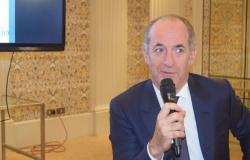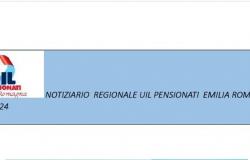Of ARISTIDE BAVA – The two-day event organized under the theme was a remarkable success Amalfitans in Calabria. Exchanges, ties, presences dal Historical Studies Circle “Le Calabrie” with the patronage of the City of Siderno and the Amalfi Culture and History Center which was held on Saturday and Sunday at the Cinema Teatro Nuovo in Siderno.
The cultural meetingSaturday, immediately got to the heart of the role that the Amalfitans had already in the nineteenth century in the society and economy of Calabria and, above all, of Locride with the inaugural greeting of the culture councilor Francesca Lopresti. She also focused on the influence that the Amalfitans had in Siderno where their stay was not only a harbinger of economy but was so strong that many families took root in the territory. A discussion expanded, then, by Marilisa Morronepresident of the historical studies circle “Le Calabrie” who, with a wealth of details, “entered” the history of the Amalfi people, confirming not only the undisputed scientific value of the conference, but also focusing and further strengthening the historical and ideal bond between Amalfi and, precisely, Siderno.
The aim of the conference, on the other hand, was to focus on the lines of a phenomenon that has affected Calabria, and particularly the territory of Locride, from the Middle Ages to the contemporary age, involving the most salient aspects of economic, social and cultural life and highlighting that the presence of the Amalfitans has materialized in many periods with communities that have been able to dominate commercial traffic. Aspects that have also extended to other areas such as cultural, religious and artistic ones. On the first day, with a session dedicated to the Middle Ages, the report by Vera Van Falkenhausena professor at the University of Tor Vergata in Rome who jokingly declared himself the only person present in the room who has neither Amalfi nor Calabrian blood, due to his foreign origins, and, therefore, certainly above the fray.
Jokes aside, Prof. Falkenhausen developed a substantial report on the role of the Amalfitans in Calabria in the Byzantine and Norman era. Then she left room for Joseph Caridi of the University of Messina who expanded the discussion by focusing on Calabria in the period from the Swabians to the Aragonese. There was room, therefore, for an intervention by the Arch. Pasquale Lopretone who spoke about the diffusion of florense in the Amalfi coast and in the Sorrento peninsula while Simone Lucibello he reported on Amalfi and Calabria from the early Middle Ages to the modern age. Then Anthony Macchione he dwelt on the story of the marriage between Franceschiello Brancia ed Elisa Ruffo.
The conclusion of the first session was entrusted to Marilisa Morrone. Then the first day ended, after the lunch break, with a guided tour of the Amalfitan places in Siderno Marina and with an excursion to Siderno Superiore. On Sunday morning the conference continued with a second session of work that recorded the discussion of the period from the 16th to the 20th century. Also significant were the interventions of this second day with the historian Aurelius Musi of the University of Salerno which was to deal with the exchanges and the Amalfi dependence in Calabria from the sixteenth to the seventeenth century, of Anthony Amatruda of the Centre for Amalfi Culture and Studies (period from 1800 to 1900), of the researcher Anthony Garganoof the local historian Dominic Romeo, deputy of History of the Homeland for Calabria who addressed a more strictly local issue speaking about the Amalfi families in Siderno.
And still more of Gianfranco Solferino which focused on the effects of trade and cultural exchanges on art and tradition. The last speech before the conclusions was by Pasquale Blefaria member of the historical studies circle “Le Calabrie” who focused on the role of the Amalfitans in the society and economy of Bovalino, another town in the Locride area strongly affected by the presence of people from Campania.
One of the most interesting aspects of the two days was also the setting up of an exhibition, in the foyer of the Cinema Teatro, with the display of documents, memories and art objects from the private collections owned by the Amalfi families rooted in Calabria. The exhibition aroused considerable interest, as did the conference which was a notable success. (ab)






